While juggling too many things at once, time slipped by and I never even opened the proposals until two days ago. With only just days left, here is what I found….
The U.S. Forest Service (USFS) simultaneously issued two press releases and two proposals, both related but neither mentions the other.
The first is a proposal to ram through the establishment of Appropriate Management Levels for 11 Wild Horse and Burro Territories (WHTs) that will be used forever more to round up any wild horses or burros that exceed these levels. The second is a notice that they will be preparing an Environmental Impact Statement to evaluate and re-authorize livestock grazing for much of these same areas.
Both are presenting skeletal information and ancient data at best and I have worked unsuccessfully for hours trying fill in the mountains of gaps these proposals are omitting from the public.
Before getting into the few specific details about the area I was able to glean during my research, it is imperative to explain how they are manipulating the public process here.
We have laws that mandate how the agencies must conduct themselves; laws that mandate quality data, accountability for agency actions, specific guidelines about what and how they must review proposals and how they must involve of the public in order to ensure our Nation doesn’t evolve into a dictatorship of secrecy and tyranny.
With that said, this is how they are trying to get around these laws….
First off, when the government proposes to do something, they must make an announcement in the Federal Register. This is the equivalent of the government’s newspaper and serves to conform to the requirements that the government must notify the public of an action. The Federal Register also serves as a legal record of the agency’s actions and establishes the legal parameters for the project.
Secondly, when a proposal is announced, the agency is suppose to follow set procedures on how they process the proposal, which include adequate opportunities for public involvement, honest evaluations of what they are about to do and must publish as current as information and data as they have available for sincere analysis.
Lastly, they are NOT suppose to issue proposals to the public that already contain foregone conclusions and completed decisions. In other words, the “evaluation process” is suppose to be just that: an ongoing analysis that includes public input and looks at options, tries to find alternatives that serve the greater good and reach decisions after they have analyzed all the data and input.
How this process evolves goes something like this…
First, they issue a notice to the public called a “Scoping Notice”. This is a very loose based overview of what they are going to do and they ask the public to provide comments to determine the scope of what the agency should consider, look at, include and develop alternatives in their preparation of the next phase of the process, which is the environmental assessment (EA).
From here, the agency collects everything they gathered during the scoping process and now assemble it in a more organized format that includes alternatives, what the issues are and - if there are problems - how to fix or mitigate them, as well as outlining as best they can the foreseeable consequences of what implementing these different alternatives will do.
Once assembled, the agency releases what is called a “preliminary EA” so the public has a more detailed document to review about what the proposal will really cover and how the different alternatives will achieve different results. The public is suppose to be provided another opportunity to provide input and comments, which generally extends for 30 days.
After the agency receives more public comments on the preliminary EA, they go back and write a “Final EA”, based on that input, and tweak the proposal further with the goal of refining it and making it the best possible plan they can. Again, the Final EA is released for public review, another round of comments and input is requested and finally, the agency, after having looked at all angles and incorporating as many concerns, finding solutions to problems that may arise, yada, yada, releases the final decision.
Now from here, there are two things that can happen. The first is, after all this review, the agency determines if the EA adequately addressed the action and concerns. They are required by law to go down a checklist of items of what has been deemed “significant”. If it is determined that the proposal will not significantly affect “the quality of human life”, they stop the analysis process and issue a Finding of No Significant Impact (FONSI), which essentially states the EA covered everything and its time to move on.
However, if this process revealed that the proposal was going to have a larger, more significant impact than they first suspected, then they are required to prepare an environmental impact statement (EIS) to examine the proposal more in depth.
The agencies loath to create EIS’s because they require a lot more data, analysis, take more time to prepare and grant the public even more time to review, ask questions and provide feed back in a mandated time frame of 90 days. Also, once a decision is issued that an EIS must be performed, the whole process starts again with a Scoping Notice, a Preliminary EIS and a Proposed EIS – all with adequate public involvement - and issuing a final decision is only possible after all of the requirements of the law, as described above, have been followed.
So with that background, here is what USFS is trying to do….
They issued two proposals, one for the WH&B AMLs and one for the livestock grazing.
The livestock grazing is being issued under a Scoping Notice to prepare an EIS, the big daddy of the proposals.
The WH&B proposal is being issued under a Scoping Notice to prepare an EA, the more minor version of analysis.
From this point on, they deviate from these legally mandated processes, as they blatantly announce in the WH&B AML proposal that:
“Preliminary analysis, displayed below, indicates that impacts to affected resources would be minor and short-term in nature (Table 4). The final results of the analysis will be displayed in the Environmental Assessment (EA) being prepared. If there is no potential for significant impacts, that finding along with the environmental assessment and a decision notice will be released for public information. If any comments are received on the proposed action then a 45-day appeal period will be provided after release of the environmental assessment and Decision Notice/Finding of No Significant Impact. If the environmental assessment concludes that there is a potential for significant impacts then an environmental impact statement would be prepared. Your comments will help us prepare an environmental impact statement”
The short version of this bureaucratic language is:
-Before USFS even released the very first Scoping document to the public, they have already made a decision that a decision will be issued at the same time the first preliminary EA is released.
-They have already decided that when it comes to establishing the WH&B AMLs, it is not a significant action and they will issue a FONSI – before the public ever even gets to see what they put together for the preliminary EA – the decision will already be issued.
-They have already decided that if the public has a problem with this, our only recourse is to take them to court during the appeal process. (And then they will cry later about how they are always getting sued by the “environmental fringe”, never mentioning how - if they weren’t riding roughshod over the laws they are suppose to be following - they might be able to cut down on these lawsuits significantly.)
Meanwhile, while analyzing wild horse and burro management and their impacts to the range is deemed insignificant and only worthy of a pre-decided EA, when it come to livestock grazing management, they are going to prepare a full blown EIS.
However, they are NOT going to consider both wild horses and burros and livestock in the same proposal. The current plan, as written, will ram the wild horse and burro AMLs through before they even look at the livestock grazing and so, the decisions on "appropriate" use by wild horses and burros will already be a done deal.
The reason they are doing this is so they won’t have to provide a document that analyzes wild horses, burros, wildlife and livestock grazing side by side - because if they do this, it provides two, very real problems they don’t want to have to address.
The firstproblem is, they don’t want a comparison document to show that livestock are getting the lions share of the resources while in many cases, wild horses and burros are being given only enough forage to cover “incidental use” (this means they 1-3 animals can be sighted occasionally on the livestock allotment but if any band tries to set up camp, they will be removed).
The second problem is, if they examine wild horses and burros in the same document as livestock, then they have to examine and develop an alternative that sincerely looks at and considers reducing livestock grazing to support sustainable wild horse and burro populations – and we can’t have that, can we?
What else are they trying to do to circumvent laws and public involvement?
Here are some other things I noted during my research of the Wild Horse & Burro AML proposal:
-They only offer two alternatives; not setting AMLs, which is illegal, and setting the AMLs they have already proposed based on input from BLM.
-They clearly state that, “Monitoring and management of the wild horse resource is outdated or non-existent”. Setting AMLs without monitoring and resource information is also illegal but that doesn’t seem to concern them here.
-The AML established in 1983 for the Little Fish Lake Wild Horse Territory and co-joining BLM Little Fish Lake HMA was “mistakenly” interpreted to only include horses" (not burros) and there is NO effort to remedy this mistake in the current proposal!
For extra added intrigue, USFS states the current AMLs for the Little Fish Lake have already been established in 1983 at: “Minimal AML” 64; simmer and winter occupancy by at least 16-28 wild horses”. However, they are proposing to INCREASE the AMLs to 80-139. Except, they also state that these wild horses interact with BLMs North Monitor and Little Fish Creek HMA and they want to limit wild horse populations from “overstocking” the BLM HMAs in the winter. What makes this kind of funny is, BLM has a maximum AML of 47 wild horses for these two HMAs, so is the numbers USFS proposing now at these much higher levels really correct?
-In some cases, the AMLs they propose are pathetically low such as 15-30 wild horses on 144,599 acres for the Toquima WHT, 3-8 wild horses on 13,025 acres in Northumberland (yes, 9 horses will be considered an “overpopulation”) or 8-16 wild horses on 20,902 acres in Kelly Creek.
-The map they provide to the public of the proposal area is so old and outdated, it included a Herd Area once known as Willow Creek that was re-zoned and incorporated into the Stone Cabin HMA years ago - as well as entirely omitting North Monitor and Hickson HMAs.
-During removal operations, public notices will only be provided in Eureka, Austin and Tonopah as to the dates of the removal operations and where public access will be restricted, which will be limited to roads near corral sites and within areas where horses are actively being gathered (no mention of burros made even though one of the areas they are setting new AMLs on contains only burros).
There’s a lot more information I would like to tell people about but the bottom line is, they just aren’t including it for public review and truly, this is a travesty of the system and processes established to prevent just this sort of thing from happening!
With that said, the public has three days to try and change the course of history here and whether they are going to get away with this or not.
First, public comments need to be submitted to the USFS about their livestock grazing proposal. Quite simply put, we need to demand that they set the wild horse and burro AMLs in the Livestock EIS so that we can compare the forage allocations between livestock, review rangeland health data, see how much water is in the areas and look at alternatives that would manage the wild horses and burros in equal consideration.
Second, we need to tell USFS the same thing regarding their proposal to set the AMLs for the wild horses and burros; that this needs to be done in conjunction with the livestock grazing EIS, not separately.
It is also very important to remind USFS that it is not appropriate (or legal) to already have reached a decision about what they are going to do before they even release the first EA to the public. At the very least, they need to provide an additional 30-day comment period after releasing the EA to allow the public to see some relevant information and sincere alternatives before they issue the Final Decision.
Here is the contact information and deadlines for public comments for each proposal.
The U.S. Forest Service (USFS) simultaneously issued two press releases and two proposals, both related but neither mentions the other.
The first is a proposal to ram through the establishment of Appropriate Management Levels for 11 Wild Horse and Burro Territories (WHTs) that will be used forever more to round up any wild horses or burros that exceed these levels. The second is a notice that they will be preparing an Environmental Impact Statement to evaluate and re-authorize livestock grazing for much of these same areas.
Both are presenting skeletal information and ancient data at best and I have worked unsuccessfully for hours trying fill in the mountains of gaps these proposals are omitting from the public.
Before getting into the few specific details about the area I was able to glean during my research, it is imperative to explain how they are manipulating the public process here.
We have laws that mandate how the agencies must conduct themselves; laws that mandate quality data, accountability for agency actions, specific guidelines about what and how they must review proposals and how they must involve of the public in order to ensure our Nation doesn’t evolve into a dictatorship of secrecy and tyranny.
With that said, this is how they are trying to get around these laws….
First off, when the government proposes to do something, they must make an announcement in the Federal Register. This is the equivalent of the government’s newspaper and serves to conform to the requirements that the government must notify the public of an action. The Federal Register also serves as a legal record of the agency’s actions and establishes the legal parameters for the project.
Secondly, when a proposal is announced, the agency is suppose to follow set procedures on how they process the proposal, which include adequate opportunities for public involvement, honest evaluations of what they are about to do and must publish as current as information and data as they have available for sincere analysis.
Lastly, they are NOT suppose to issue proposals to the public that already contain foregone conclusions and completed decisions. In other words, the “evaluation process” is suppose to be just that: an ongoing analysis that includes public input and looks at options, tries to find alternatives that serve the greater good and reach decisions after they have analyzed all the data and input.
How this process evolves goes something like this…
First, they issue a notice to the public called a “Scoping Notice”. This is a very loose based overview of what they are going to do and they ask the public to provide comments to determine the scope of what the agency should consider, look at, include and develop alternatives in their preparation of the next phase of the process, which is the environmental assessment (EA).
From here, the agency collects everything they gathered during the scoping process and now assemble it in a more organized format that includes alternatives, what the issues are and - if there are problems - how to fix or mitigate them, as well as outlining as best they can the foreseeable consequences of what implementing these different alternatives will do.
Once assembled, the agency releases what is called a “preliminary EA” so the public has a more detailed document to review about what the proposal will really cover and how the different alternatives will achieve different results. The public is suppose to be provided another opportunity to provide input and comments, which generally extends for 30 days.
After the agency receives more public comments on the preliminary EA, they go back and write a “Final EA”, based on that input, and tweak the proposal further with the goal of refining it and making it the best possible plan they can. Again, the Final EA is released for public review, another round of comments and input is requested and finally, the agency, after having looked at all angles and incorporating as many concerns, finding solutions to problems that may arise, yada, yada, releases the final decision.
Now from here, there are two things that can happen. The first is, after all this review, the agency determines if the EA adequately addressed the action and concerns. They are required by law to go down a checklist of items of what has been deemed “significant”. If it is determined that the proposal will not significantly affect “the quality of human life”, they stop the analysis process and issue a Finding of No Significant Impact (FONSI), which essentially states the EA covered everything and its time to move on.
However, if this process revealed that the proposal was going to have a larger, more significant impact than they first suspected, then they are required to prepare an environmental impact statement (EIS) to examine the proposal more in depth.
The agencies loath to create EIS’s because they require a lot more data, analysis, take more time to prepare and grant the public even more time to review, ask questions and provide feed back in a mandated time frame of 90 days. Also, once a decision is issued that an EIS must be performed, the whole process starts again with a Scoping Notice, a Preliminary EIS and a Proposed EIS – all with adequate public involvement - and issuing a final decision is only possible after all of the requirements of the law, as described above, have been followed.
So with that background, here is what USFS is trying to do….
They issued two proposals, one for the WH&B AMLs and one for the livestock grazing.
The livestock grazing is being issued under a Scoping Notice to prepare an EIS, the big daddy of the proposals.
The WH&B proposal is being issued under a Scoping Notice to prepare an EA, the more minor version of analysis.
From this point on, they deviate from these legally mandated processes, as they blatantly announce in the WH&B AML proposal that:
“Preliminary analysis, displayed below, indicates that impacts to affected resources would be minor and short-term in nature (Table 4). The final results of the analysis will be displayed in the Environmental Assessment (EA) being prepared. If there is no potential for significant impacts, that finding along with the environmental assessment and a decision notice will be released for public information. If any comments are received on the proposed action then a 45-day appeal period will be provided after release of the environmental assessment and Decision Notice/Finding of No Significant Impact. If the environmental assessment concludes that there is a potential for significant impacts then an environmental impact statement would be prepared. Your comments will help us prepare an environmental impact statement”
The short version of this bureaucratic language is:
-Before USFS even released the very first Scoping document to the public, they have already made a decision that a decision will be issued at the same time the first preliminary EA is released.
-They have already decided that when it comes to establishing the WH&B AMLs, it is not a significant action and they will issue a FONSI – before the public ever even gets to see what they put together for the preliminary EA – the decision will already be issued.
-They have already decided that if the public has a problem with this, our only recourse is to take them to court during the appeal process. (And then they will cry later about how they are always getting sued by the “environmental fringe”, never mentioning how - if they weren’t riding roughshod over the laws they are suppose to be following - they might be able to cut down on these lawsuits significantly.)
Meanwhile, while analyzing wild horse and burro management and their impacts to the range is deemed insignificant and only worthy of a pre-decided EA, when it come to livestock grazing management, they are going to prepare a full blown EIS.
However, they are NOT going to consider both wild horses and burros and livestock in the same proposal. The current plan, as written, will ram the wild horse and burro AMLs through before they even look at the livestock grazing and so, the decisions on "appropriate" use by wild horses and burros will already be a done deal.
The reason they are doing this is so they won’t have to provide a document that analyzes wild horses, burros, wildlife and livestock grazing side by side - because if they do this, it provides two, very real problems they don’t want to have to address.
The firstproblem is, they don’t want a comparison document to show that livestock are getting the lions share of the resources while in many cases, wild horses and burros are being given only enough forage to cover “incidental use” (this means they 1-3 animals can be sighted occasionally on the livestock allotment but if any band tries to set up camp, they will be removed).
The second problem is, if they examine wild horses and burros in the same document as livestock, then they have to examine and develop an alternative that sincerely looks at and considers reducing livestock grazing to support sustainable wild horse and burro populations – and we can’t have that, can we?
What else are they trying to do to circumvent laws and public involvement?
Here are some other things I noted during my research of the Wild Horse & Burro AML proposal:
-They only offer two alternatives; not setting AMLs, which is illegal, and setting the AMLs they have already proposed based on input from BLM.
-They clearly state that, “Monitoring and management of the wild horse resource is outdated or non-existent”. Setting AMLs without monitoring and resource information is also illegal but that doesn’t seem to concern them here.
-The AML established in 1983 for the Little Fish Lake Wild Horse Territory and co-joining BLM Little Fish Lake HMA was “mistakenly” interpreted to only include horses" (not burros) and there is NO effort to remedy this mistake in the current proposal!
For extra added intrigue, USFS states the current AMLs for the Little Fish Lake have already been established in 1983 at: “Minimal AML” 64; simmer and winter occupancy by at least 16-28 wild horses”. However, they are proposing to INCREASE the AMLs to 80-139. Except, they also state that these wild horses interact with BLMs North Monitor and Little Fish Creek HMA and they want to limit wild horse populations from “overstocking” the BLM HMAs in the winter. What makes this kind of funny is, BLM has a maximum AML of 47 wild horses for these two HMAs, so is the numbers USFS proposing now at these much higher levels really correct?
-In some cases, the AMLs they propose are pathetically low such as 15-30 wild horses on 144,599 acres for the Toquima WHT, 3-8 wild horses on 13,025 acres in Northumberland (yes, 9 horses will be considered an “overpopulation”) or 8-16 wild horses on 20,902 acres in Kelly Creek.
-The map they provide to the public of the proposal area is so old and outdated, it included a Herd Area once known as Willow Creek that was re-zoned and incorporated into the Stone Cabin HMA years ago - as well as entirely omitting North Monitor and Hickson HMAs.
-During removal operations, public notices will only be provided in Eureka, Austin and Tonopah as to the dates of the removal operations and where public access will be restricted, which will be limited to roads near corral sites and within areas where horses are actively being gathered (no mention of burros made even though one of the areas they are setting new AMLs on contains only burros).
There’s a lot more information I would like to tell people about but the bottom line is, they just aren’t including it for public review and truly, this is a travesty of the system and processes established to prevent just this sort of thing from happening!
With that said, the public has three days to try and change the course of history here and whether they are going to get away with this or not.
First, public comments need to be submitted to the USFS about their livestock grazing proposal. Quite simply put, we need to demand that they set the wild horse and burro AMLs in the Livestock EIS so that we can compare the forage allocations between livestock, review rangeland health data, see how much water is in the areas and look at alternatives that would manage the wild horses and burros in equal consideration.
Second, we need to tell USFS the same thing regarding their proposal to set the AMLs for the wild horses and burros; that this needs to be done in conjunction with the livestock grazing EIS, not separately.
It is also very important to remind USFS that it is not appropriate (or legal) to already have reached a decision about what they are going to do before they even release the first EA to the public. At the very least, they need to provide an additional 30-day comment period after releasing the EA to allow the public to see some relevant information and sincere alternatives before they issue the Final Decision.
Here is the contact information and deadlines for public comments for each proposal.
Livestock Grazing EIS
Hot Creek-Monitor Rangeland Project
Deadline: Monday, March 22, 2010, 4:30 p.m. pst.
Submit comments to:
Austin/Tonopah Ranger District
District Ranger Steven Wiliams
Email at:
comments-intermtn-humboldt-toiyabe-austin-tonopah@fs.fed.us
Wild Horse & Burro AML Proposal
Deadline: Friday, March 26, 2010 4:30 p.m. pst
While an email address was provided for the livestock grazing proposal, USFS didn’t extend this courtesy for the WH&B Proposal (imagine that….) However, Barbara Warner of American Horse Defense Fund tracked down an email address for the responsible officer at:,
Heather Mobley hmobley@fs.fed.us
Or Fax: (775) 964-1451
Links to the relevant USFS Notices/Documents:
Hot Creek-Monitor Rangeland Project
Wild Horse and Burro Appropriate Management Levels

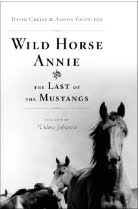








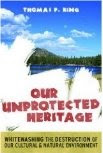



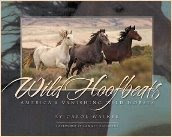




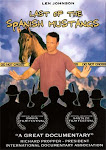





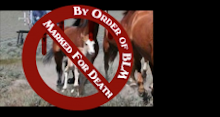
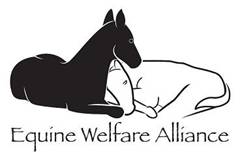
9 comments:
I copied this and sent it to some interested parties (God, I hope that's not copyright infringement!) Will be authoring some scathing protestations that I hope sets something on fire!
AH - would you please put up links to what we're supposed to be contacting the USFS about? Searched their website, but it's so confusing!
Are there links to the protocols? Do you think a rewrite of the last three paragraphs will work without referencing specific violations and citations?
This is so much to digest, and such a short timeframe. Wish someone would write a template for a response!
Stealth and more stealth - typical!
I ran across this and posted it to tracie over at the Mustang project blog about a week 1/2 ago and sent the information to the cloud foundation to post..I actually ran across it while on another research project on the ruby pipeline.
Thank you for the good information and analaysis..I too went to each HMA in that complex to read the assesment in order to be able to comment in relation to each..also noted several of these HMAs have mountain lions..and no mention of the results of predation on the herds..also one of those HMAs has no horses on it, and is a prime source of water during the summer months of high altitude grazing
Also this a joint operation between BLM and NFS to combine the areas that are currently operated seperately, but they acknowledge the horses have to use both to survive, wintering down low in BLM HMAs and summering in high altitudes where there are water sources and forage on NFS..I did not see the comment section given for the BLM and am assuming it should be both.
This is outrageous! The evil never ends....
I believe this information may be related but I could not find a way to it from the .org domain, found via google for austin-tonopah:
http://www.saveourwildhorses.org/PDF/FWS/ForestService-Herds/Austin-Tonopah-AMLOutline-06.pdf
Yes, this is A LOT of information to absorb in such a very short time....even for me...
A template (today) would be a great idea for those who would like to take action, but don't know exactly what the most effective terminology would be...just a suggestion!
Thanks for all your hard work in this....
These BLM, US Forest Service are disgusting corrupt thugs need to be sued-please contact me on face book if someone can help do this.
Janet Ferguson says:
Thank you American Herds for your public service announcement!
You have provided valuable info on the processes involved here that everyone can benefit from going forward.
You certainly did perform a Public Service in posting this. If I hadn't seen it here, I would NOT have gotten my comments in before the first deadline, and I wouldn't have had nearly as much understanding about what I was commenting about!
Thanks again!
Post a Comment